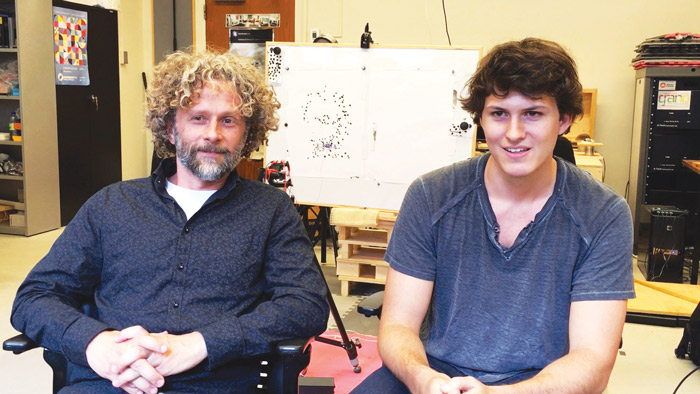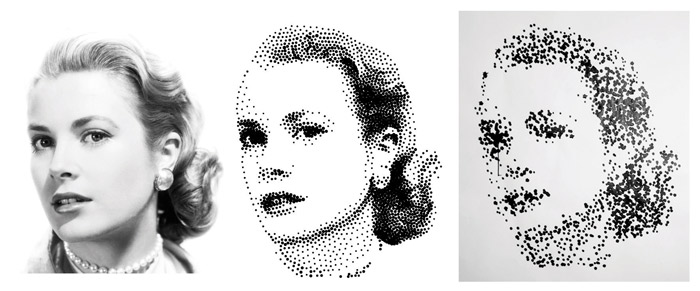A group of McGill researchers have developed a technique to create large-scale drawings with a small drone called Crazyflie. The Computer Animation and Interaction Capture Lab, led by Computer Science Associate Professor Paul Kry, published their results in the most recent issue of Expressive. Their research outlines a breakthrough method of using robots to create unique works of art.
This novel research out of Kry’s Lab all started with a NSERC USRA (Undergraduate Summer Research Award) given to an undergraduate student in his lab. Kry’s students spent many hours in the lab to design the intricate algorithms required to create stippled works of art.
Inspired by the myriad blank walls in McGill’s buildings, the team tested their drone by creating drawings of Alan Turing, Grace Kelly, and a teapot.
There have been previous instances of combining robotics and programming with art. A London art gallery exhibited a robotic arm that could produce portraits while a project out of MIT programmed drones to provide rim illumination, where a drone illuminates the contours of a model by providing a three-dimensionally adjustable light source.
There are number of advantages with the lab’s design of the painting drone. The drone—a quadrotor flying robot—is much safer to handle than its heavier counterparts. At 27 grams, it weighs about the same as a AA battery.
Instead of the traditional brush stroke technique of painting, the lab designed the drone to reproduce an image via a stippling technique, which produce dots rather than lines. The rationale is that continuous contact between the brush and the canvas surface—typical to the brush stroke technique—is extremely difficult to maintain and is more prone to errors.
The drone is also self-correcting. It takes its errors into consideration as it calculates where to paint the next dot.

Despite the drone’s innovative artistic technique, there are several issues that, once resolved, would result in a much more satisfactory user experience. The drone’s lightweight design makes it infeasible to use outdoors because a slight gust of wind could cause it to veer off course. In addition, the battery lasts only five to six minutes, and is somewhat of a nuisance to recharge.
“One solution is to tether it to a power source, but it’s not ideal as it would limit the drone’s range of motion,” Kry said. “I think the better way is to use inductive charging, like the ones used by smartphones.”
Instead of a charging cable, inductive charging could allow the drone to charge wirelessly similar to the charging stations of a Samsung Galaxy.
In addition to physical improvements, there are some improvements that can be made for the drone’s artistic execution. For example, a line is apparent underneath the portrait of Grace Kelly’s left eye. The artistic quality of Grace Kelly’s ‘tear’ was a result of too much ink on the sponge brush.
“It’s not about robots making art,” Kry said. “It’s a group of computer scientists designing a program to create something aesthetically pleasing. The drone takes the algorithms we designed and turns it into something unique.”
Many of these factors—a little wind here, too much ink there—are often beyond the lab’s control. Nonetheless, Kry’s lab hopes to expand their artistic repertoire. A further avenue of experimentation includes changing the colour of the ink in certain areas as well as co-ordinating multiple drones to shorten the time required to complete a project.
Kry’s research and algorithm design brings forward an exciting and inventive step to the crossroad of art and science.








